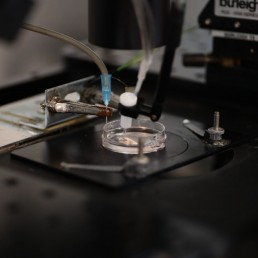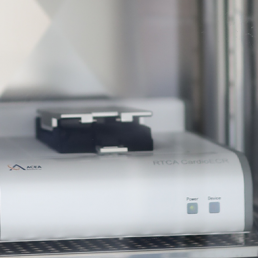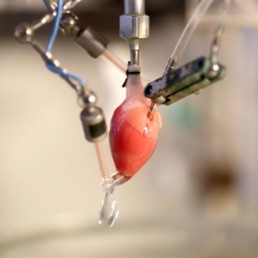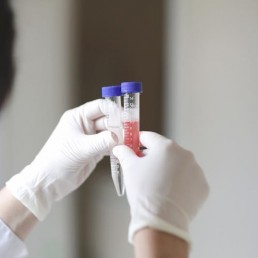NaV1.5 late assays

Late sodium ion channel (NaV1.5 late)
The α-subunit (Nav1.5) encoded by the SCN5A gene is the predominant element in heart tissue and plays a critical role in the excitability of cardiomyocytes. Sodium ion channel mediate the inward sodium current (INa) and induce fast depolarization, thereby initiating the excitation–contraction coupling cascades in the cells. INa mediated by Nav1.5 can be classified into peak and late sodium currents (INa-P and INa-L). Mutations of SCN5A can impair Nav1.5 function and change the magnitude and duration of INa-P and INa-L, consequently leading to different types of fatal arrhythmias.
Nav1.5 late assay & preclinical studies
An increase in INa-L due to acquired conditions or inherited SCN5A mutations in favor of intracellular Ca2+ loading, the occurrence of early and delayed after depolarization (EAD and DAD), triggered activities, and spontaneous diastolic depolarization that promotes the spatial and temporal dispersion of ventricular repolarization can lead to reentrant arrhythmias.
What is the added value of such a study?
- Threshold concentration of hNav1.5 late blockade
- Leading to the determination of the safety range versus efficacious concentration
- You obtain your safety margin
Automated Patch Clamp
Technique
- Human Embryonic Kidney HEK-293 cells
- Experiment conducted at room temperature or at physiological temperature (35°C)
- Up to 6 increasing cumulative concentrations of test compound or biologic.
- NaV1.5 late current is activated by ATX-II (100nM)
- NaV1.5 late current could also be activated by veratridine (50 µM)
Measured parameters
- Amplitude of the late current upon depolarization to –30mV (pA)
- Amplitude of the base current at –110mV (pA)
- Ion current amplitude measurement
- Inhibition of NaV1.5 late current amplitude (%)
- IC50 (at least 4 concentrations required)
Main advantages
- High throughput screening
- Cost effective
- Fast process to delivery results
- Perfect at earliest stages
- Design protocol could be adapted
Manual Patch Clamp
Technique
- Human Embryonic Kidney HEK-293 cells
- Experiment conducted at room temperature or at physiological temperature (35°C)
- NaV1.5 late current is activated by ATX-II (100nM)
- NaV1.5 late current could also be activated by veratridine (50 µM)
- Up to 5 increasing concentrations of test compound tested independently
- At least 3 treated cells are recommended
Measured parameters
- Amplitude of the late current upon depolarization to –30mV (pA)
- Amplitude of the base current at –110mV (pA)
- Ion current amplitude measurement
- Inhibition of NaV1.5 late current amplitude (%)
- IC50 value (at least 4 concentrations required)
Main advantages
- Technically robust
- Highly informative (more accurate IC50 value)
- Strongly replicable
- Design protocol could be adapted
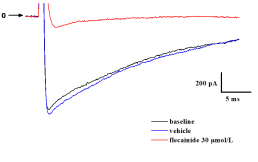
Typical effects of flecaidine on Nav1.5 late current recorded from HEK-293 cells.
Reference compounds or positive controls
Reference CompoundsIC₅₀
Flecainide3.7 µM
